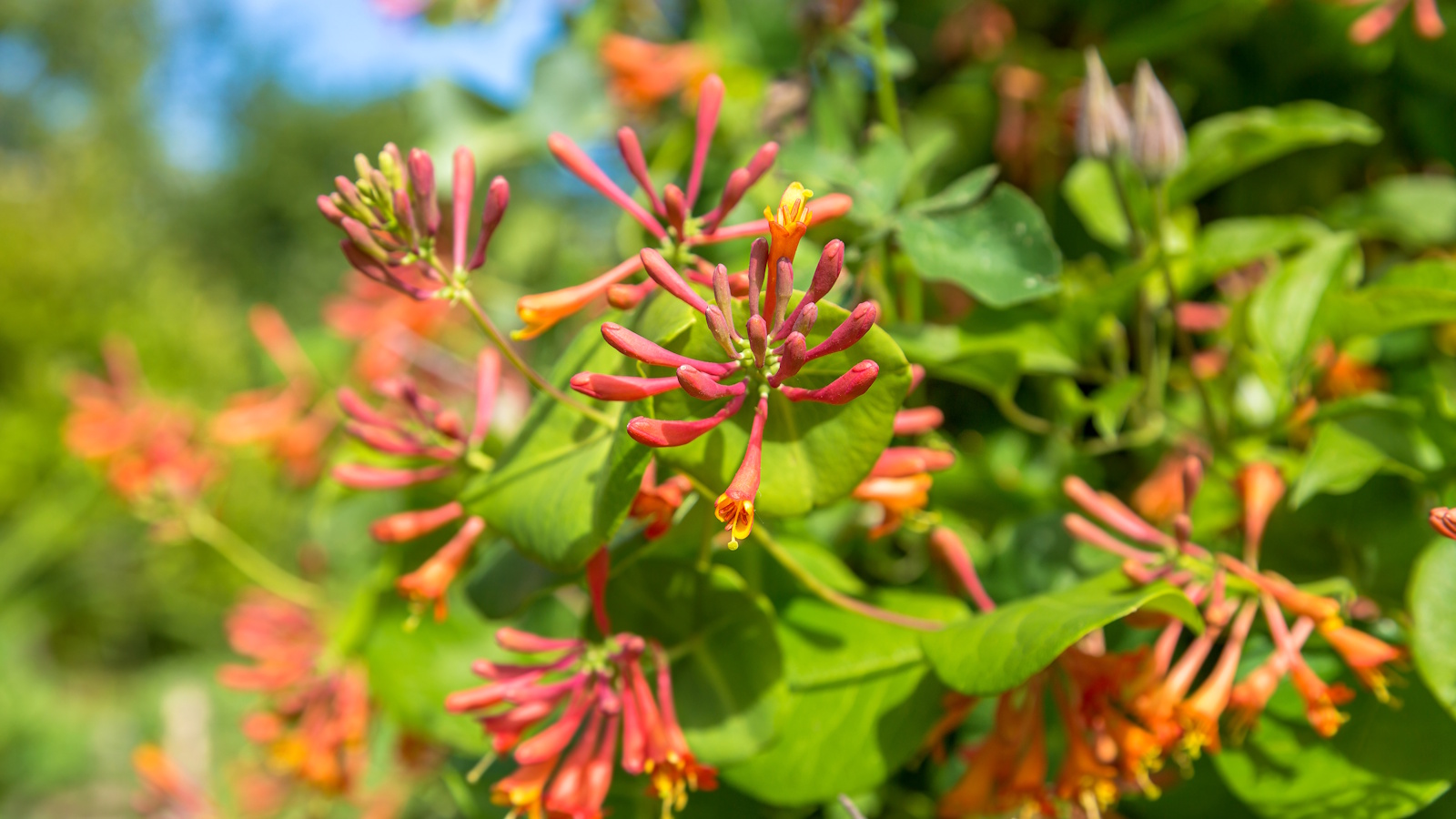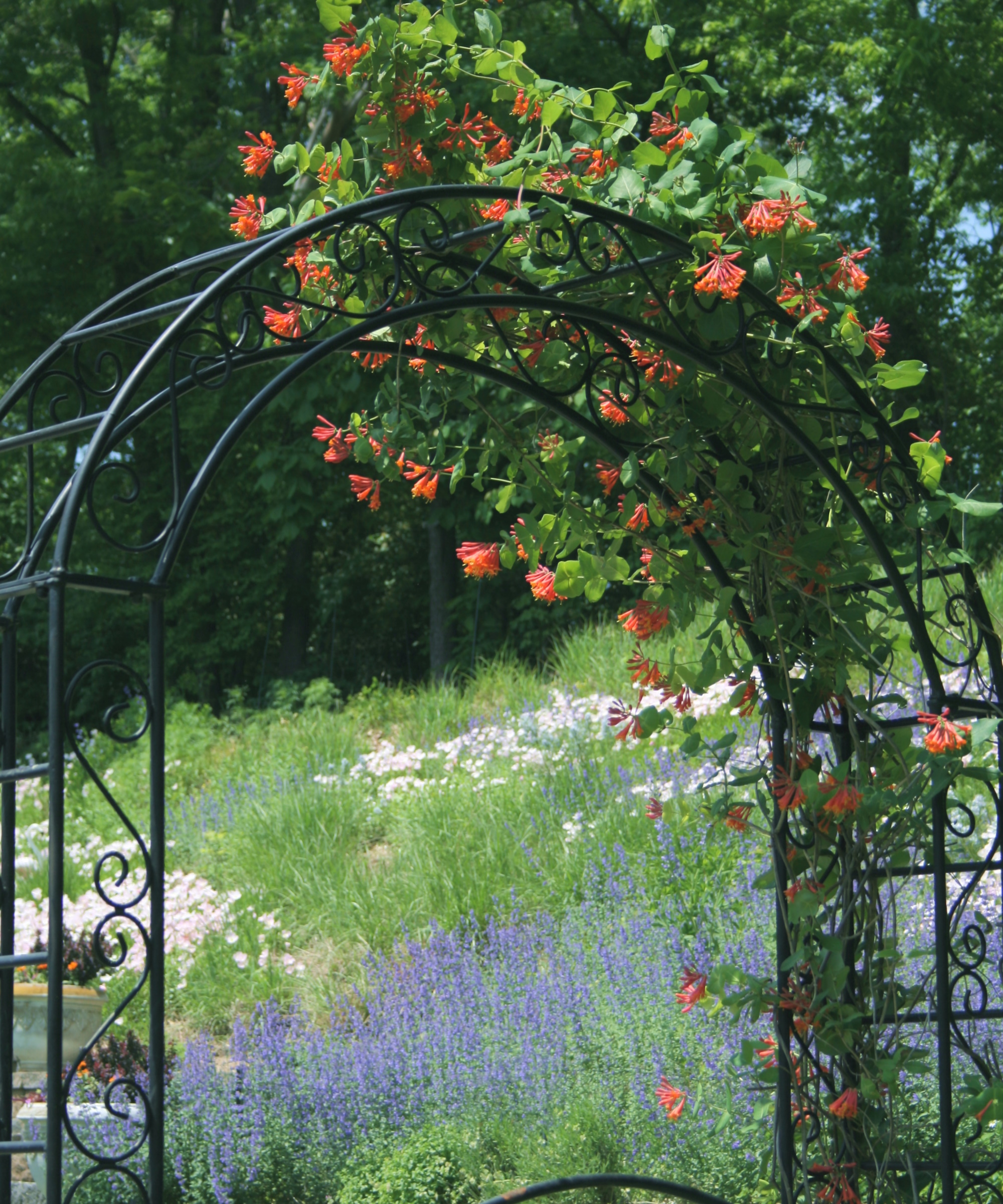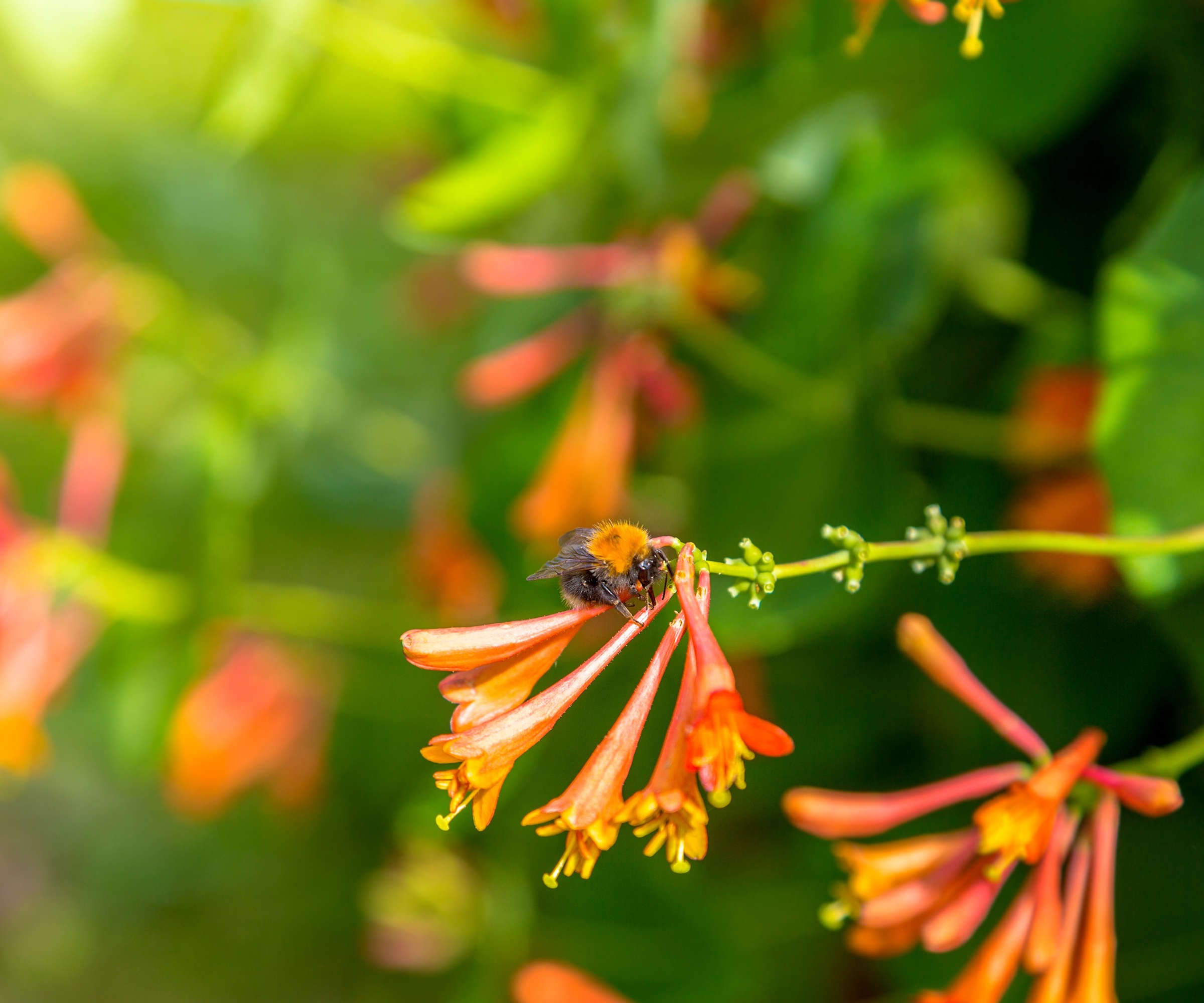
There are few climbing plants that deliver as much joy as coral honeysuckle. Not only does this fragrant vine produce masses of colorful coral-red blooms, but it is also a hummingbird magnet during spring and summer, and who wouldn't want to observe these miniature migrants flitting from flower to flower in the backyard?
Coral honeysuckle, or Lonicera sempervirens, is native to North America, growing across Texas, Florida and northwards to New York. What makes it valuable as a backyard vine is both its tolerance for part-shade as well as its cold hardiness. It is not fussy; this tough climber just gets on with it.
So, if you have a fence or wall that would work well for one of the best honeysuckles, this guide has you covered. Here, one tropical plant expert from Florida reveals how to grow coral honeysuckle to enjoy vibrant, fragrant flowers this year.

How to grow coral honeysuckle
Coral honeysuckle is one of the easiest climbers to grow, typically blooming for many months over spring and summer.
This native plant will bring joy and color to your plot, and is far less aggressive when compared to Japanese honeysuckle, or Lonicera japonica, which is considered an invasive climber in several US states, including Florida, Wisconsin and Texas.
Growing habits for coral honeysuckle

In terms of how to grow coral honeysuckle, it can be planted from US hardiness zone 4 to zone 9, tolerating a wide range of conditions.
It does just fine in loamy, sandy and even clay soil, and can be planted in both full sun or part shade, requiring only a few hours of light each day to thrive.
Live coral honeysuckle starter plants are available to order from Amazon.
'If you are looking for one of the best flowering climbers, you won't find a better native option than coral honeysuckle,' says Tatiana Anderson, plant expert and co-founder of Top Tropicals, based in Florida.
'For the best results, plant it at the base of a trellis, fence or near an arbor,' Tatiana says.
'It is a quick-growing vine, and given time, can reach up to 20 feet in length, helping to add color to vertical surfaces in backyards.
'This cold-hardy native has red-orange tubular blooms from spring to fall and adds a bold tropical contrast to borders and pot displays. I can't recommend it enough!'
What's more, if you are seeking one of the best climbers to attract hummingbirds, bees and butterflies, this is the plant for you.
Care guide for coral honeysuckle

Soil: In its native environment, coral honeysuckle can be found growing at the edges of woodlands across North America, with a preference for well-drained soil. While they grow best in moderately fertile ground, they will tolerate sandy, rocky or even poor soil conditions.
Light: For the best flowering show, position coral honeysuckles in pots or borders with six or more hours of sunshine. However, this adaptable native vine can also grow in darker corners where it only receives a few hours of sun each day. Remember that flowering will be reduced in shady spots.
Watering: Deep watering is recommended to help your coral honeysuckle settle during its first year. Once established, these climbers are remarkably drought-tolerant, although supplemental watering is needed for pot-grown specimens that can dry out very quickly during June and July.
Fertilizing: For pot-grown coral honeysuckles, feed once or twice in spring using something like this organic slow-release fertilizer from Burpee, available from Amazon. For established vines in the ground, I would not recommend feeding, as they can generally find what they need in the soil.
Pruning: To keep your honeysuckle vine more compact and encourage fresh growth, you can prune after the flowers fade in late summer or early fall.
Toxicity: This climber is not considered toxic to humans and pets.
Support: It is a good idea to support your vine as it grows across trellises, fences or walls. Try something like these reusable velcro plant ties, available from Amazon, to secure your honeysuckle as it grows.
FAQs
Can I grow coral honeysuckle in pots?
Yes, honeysuckles are some of the best climbers to grow in pots. In terms of how to grow honeysuckle in pots, be sure to use a large container, in the range of 10 to 16 inches is a good idea, which will provide plenty of room. Be sure to use a good quality potting mix with added drainage, and keep pots well watered during spring and summer.
Is coral honeysuckle evergreen?
This will depend on where you live. In cooler, northern regions, such as zone 5, you may find that coral honeysuckle vines lose their foliage in fall. However, in mild regions, such as zone 8, they tend to retain their leaves year-round.
There are many different varieties of coral honeysuckle that you can opt for, including 'Major Wheeler', which has crimson-red flowers, or 'John Clayton', which has pale lemon-yellow trumpet blooms.
For more tough climbing plants that thrive on neglect, see our guide on how to grow trumpet vine, for a vigorous plant that will prove a hit with pollinators and hummingbirds this summer.
Shop climber accessories
The rounded Dorlis planter from Orren Ellis is perfect for contemporary spaces, adding a subtle but decorative touch to garden designs.







